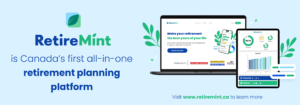
By Matt Casadona, 365 Business Tips
Special to Financial Independence Hub
Financial Independence is the goal of everyone with a bank account, and budgeting plays a main role in achieving that.
It can be difficult to understand where to start or how to get yourself back on track.
With these valuable pieces of insight from leading industry experts, you can start your own Fnancial Independence journey.
Pay yourself first
“One essential budgeting tip for achieving financial independence is to adopt a ‘pay yourself first’ approach. This means prioritizing savings and investments by setting aside a certain portion of your income as soon as you receive it, before using it for bills, expenses, or discretionary spending. By automating savings and investments into accounts like emergency funds, retirement accounts, or other investment accounts, you’re prioritizing your financial goals and building a habit of consistently contributing toward them. Over time, this proactive approach allows your savings to grow, helps you avoid lifestyle inflation, and keeps you focused on long-term financial stability rather than short-term gratification.” – Bill Lyons, CEO of Griffin Funding
Financial independence wildly relies on smart budgeting and disciplined financial practices. One powerful strategy is to leverage your tax return, which is often a lump sum. Consider depositing your tax return directly into a separate savings account from your tax software. This strategic move creates somewhat of a safety net. This disciplined approach not only safeguards your funds but also provides a foundation for future investments or emergency expenses. Over time, this habit can contribute significantly to your financial independence.
Minimize Debt
“Minimizing your debt can help achieve financial independence, as it reduces financial burdens and frees up resources for other financial goals. When you prioritize the repayment of high-interest debts, such as credit-card debt or personal loans, individuals can save significant amounts of money on interest payments over time. This disciplined approach to debt reduction can also improve credit scores, making it easier to qualify for private financing options when purchasing a home or commercial property. Minimizing debt, individuals can strengthen their financial position and increase their chances of securing favorable terms and rates for private financing, ultimately helping them achieve their real estate ownership goals.” – Sacha Ferrandi Founder & Principal, Source Capital
“A practical budgeting method divides income into three categories: 50% for needs, 30% for wants, and 20% for savings or debt repayment. This system assists individuals in efficiently allocating their funds, ensuring they cover essential expenses such as housing, groceries, and utilities, while also setting aside money for financial goals. Wants to include discretionary spending such as entertainment and dining out. The remaining portion goes towards savings or paying off debts, contributing to long-term financial security. This budgeting approach offers a simple framework for managing finances, preventing overspending on non-essentials while prioritizing savings. It’s adaptable to different income levels, making it a balanced way to manage money.”– California Credit Union
Plan for irregular expenses
“Planning for irregular expenses is a wise budgeting strategy that can contribute to financial independence. By anticipating and setting aside funds for irregular expenses, individuals can avoid financial stress when unexpected costs arise. One effective way to allocate funds for irregular expenses is by saving a portion of your tax refund return instead of immediately spending it on unnecessary items. Exercising discipline and directing your tax refund towards an emergency fund or a dedicated savings account, you can build a financial cushion that provides peace of mind and protects you from unexpected financial setbacks. This proactive approach to budgeting ensures that you are prepared for unexpected irregular expenses and helps you maintain control over your financial well-being.”– Lisa Green-Lewis Tax Expert, Turbo Tax Continue Reading…








